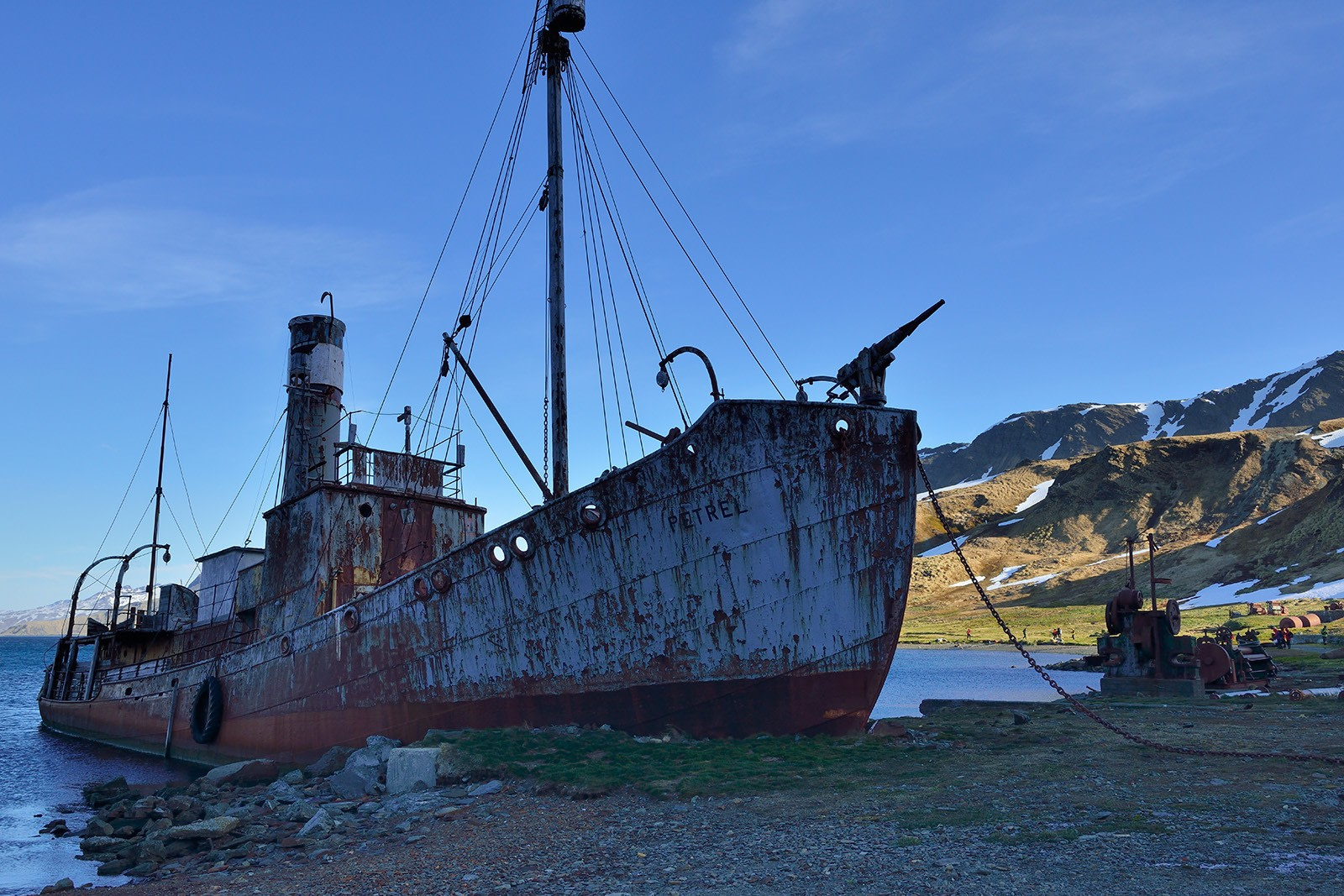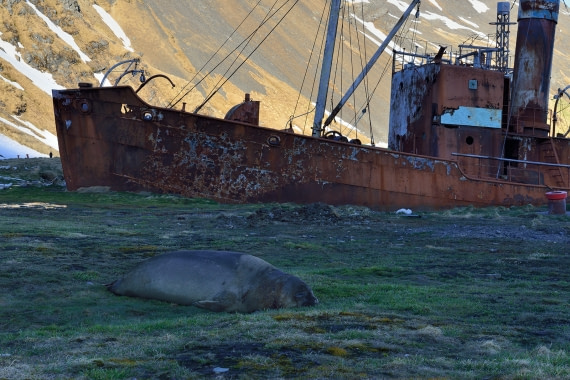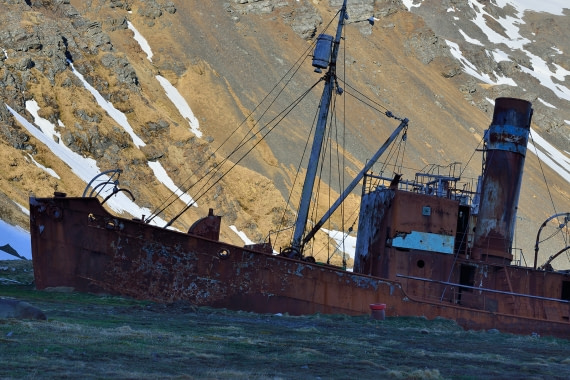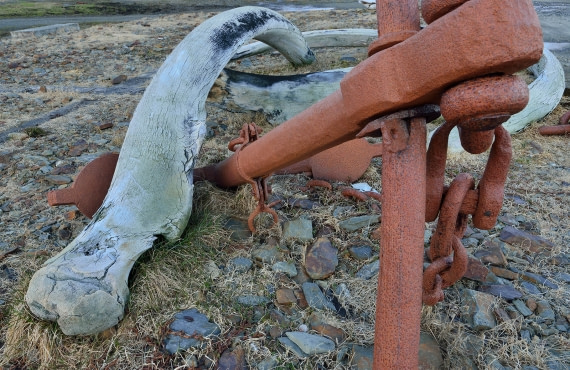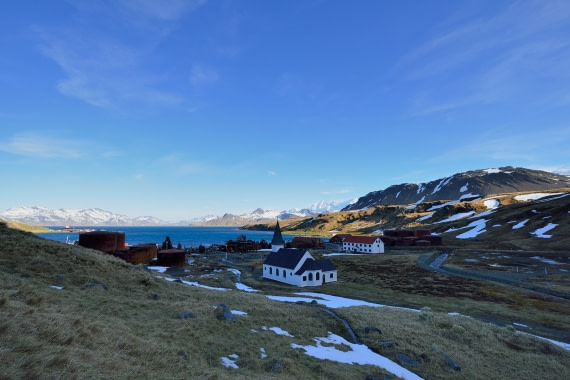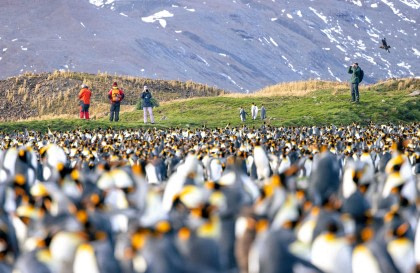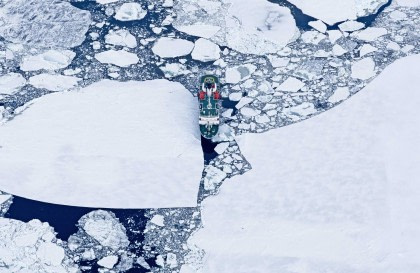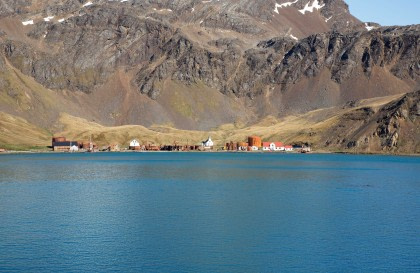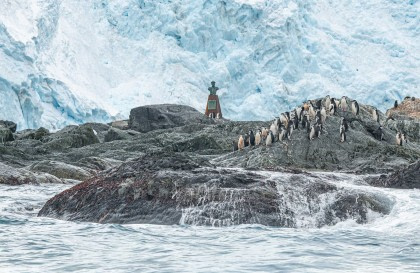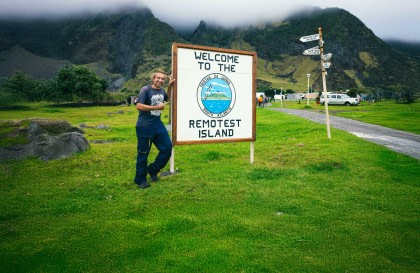The whale industry origins of Grytviken, South Georgia
During the early 20th century, Norwegian sea captain Carl Anton Larsen established a whaling and sealing station on the remote island of South Georgia. He chose this particular location after first visiting the island during the 1901-1903 Swedish Antarctic expedition.
At that time, the waters were teeming with marine life, providing an ample enough supply to meet the high global demand for whale oil and products.
With unrestricted whaling and fishing opportunities, Grytviken was the ideal place to set up.
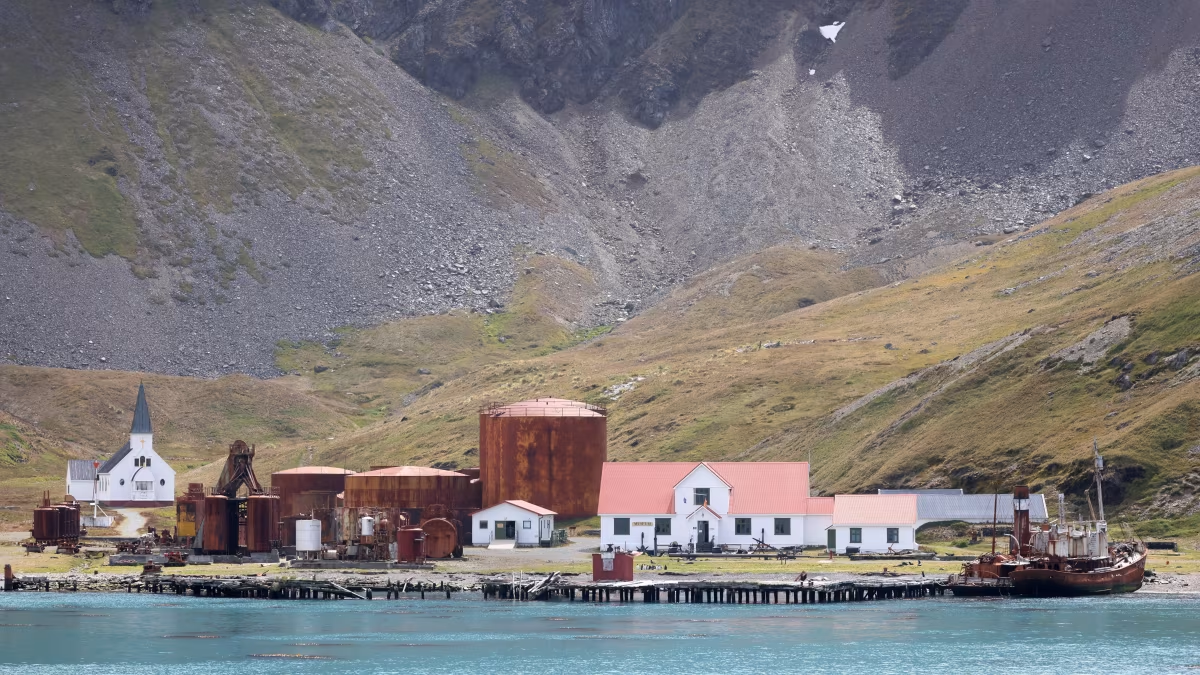
Rampant whale hunting signals Grytviken's decline
The following 60 years of unsustainable hunting practices eventually took its toll on South Georgia’s marine mammal populations. By the mid 1960s, whales and seals had drastically declined to the point of complete disappearance.
Soon the whalers at Grytviken found themselves with nothing left to fish and needed to close the station for good.
Rather than remove the massive amount of equipment with which they had enriched themselves, however, the Norwegian hunters left it where it stood - not the friendliest choice for the environment, but one that allows for you to still see Grytviken today.
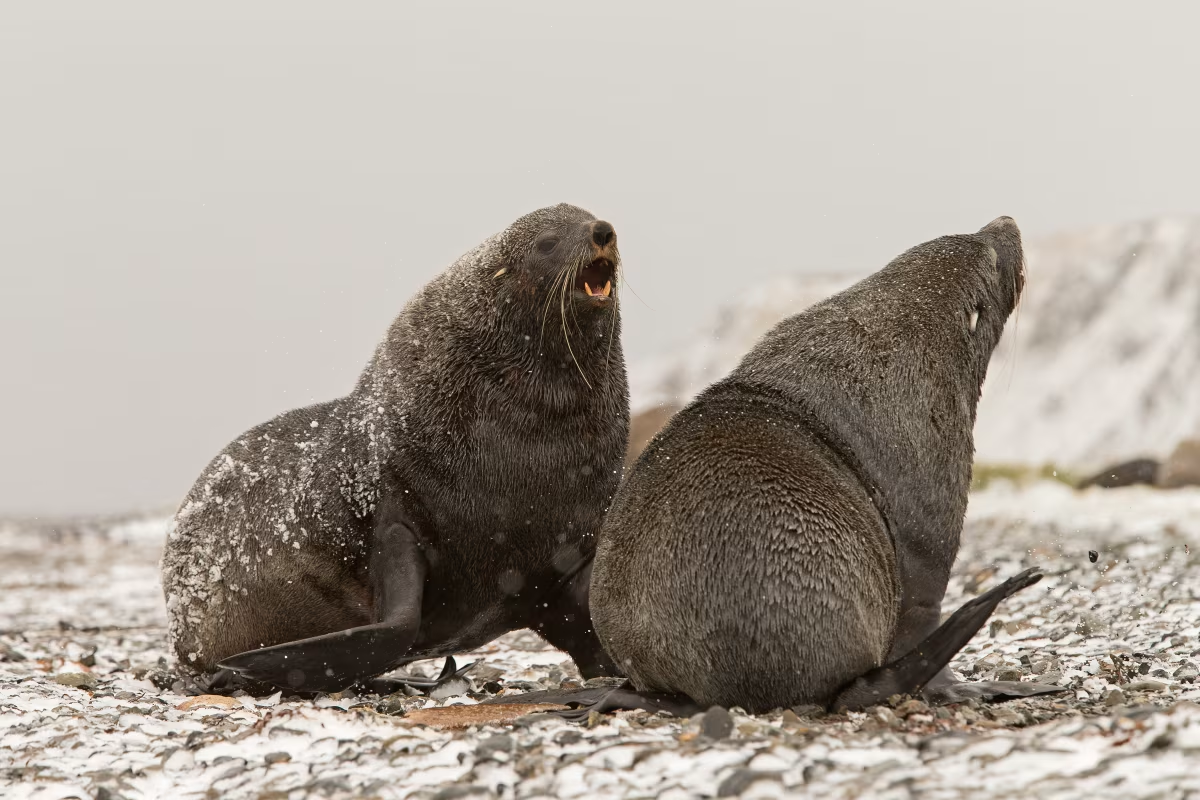
Grytviken's legacy as an Antarctic industrial time capsule
Only a portion of Grytviken’s original structures now remain, as the Government of South Georgia marshalled a major project in 2003 to remove the station’s many dangerous buildings and causes of airborne asbestos. Though this work allows for visitors to continue using Grytviken, it also dramatically changed the character of the site.
Nonetheless, we are still able to get some sense of the early days of the Southern Ocean whale industry while visiting Grytviken. The original church, resident cemetery, and the more recently added South Georgia Museum (opened in 1992) are also located on this important historic site.

